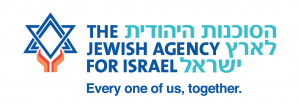“And now here is my secret, a very simple secret: It is only with the heart that one can see rightly; what is essential is invisible to the eye” – The Little Prince
Purim is one of our most colorful, complex, and moving holidays. It’s a combination of feasts and joy, graggers (a noise-making ratchet), gifts for the needy, reading the Megilah (scroll), a food basket sent to family and friends (“misloach manot”), costumes, and so on. During all this lies the Book of Esther where Haman with the consent of King Ahasuerus plotted the genocide of the Jewish people of the Persian Empire. In the end, the day that Haman wanted to complete the annihilation of Jews, becomes the day that Mordechai and Esther succeed in stopping him.
This dramatic book of Esther, known as the Megilah has many interpretations, and it contains themes that are both visible and hidden to the eye. For example, the women of the scroll confront us with questions about feminism. A second example is when Mordechai asks Esther “And who knows if perhaps you have come to the kingdom for such a time as this?” (Esther 4:14). This shows us the enormity of responsibility inherent in positions of power. Furthermore, disguising oneself can serve as protection and as a powerful tool to reveal parts of our personality that we didn’t even know were there.
Learning about Purim is an invitation to learn about ourselves: our own sources of power and how what’s hidden and revealed can illuminate our lives.
We invite you to invest in your growth and the growth of your fellows by engaging in the learning opportunities that this holiday offers us.
You will find here a variety of activities and texts that will help you with this –
- Group activity sessions
- 101 about Purim
- The Megilah – Book of Esther (in multiple languages)
- Short videos and Chevruta (learning with a partner) suggestions
Please feel free to reach out to us if you have questions or wish to learn more!
Chag Sameach!
Masa Israel Journey


